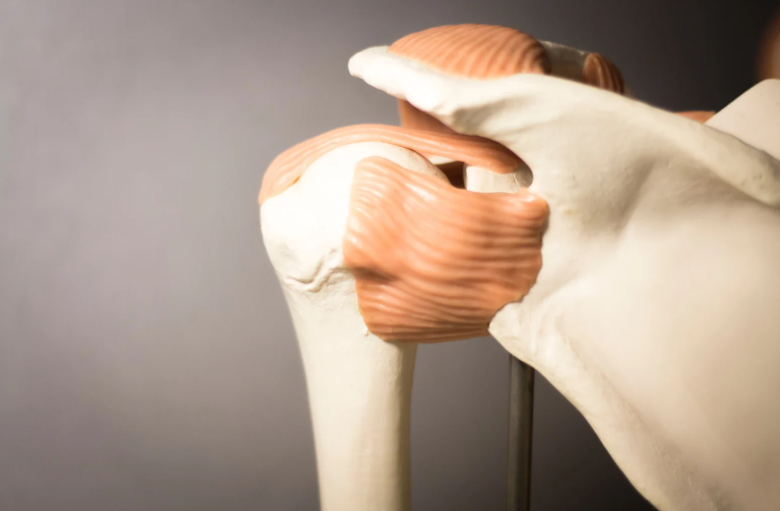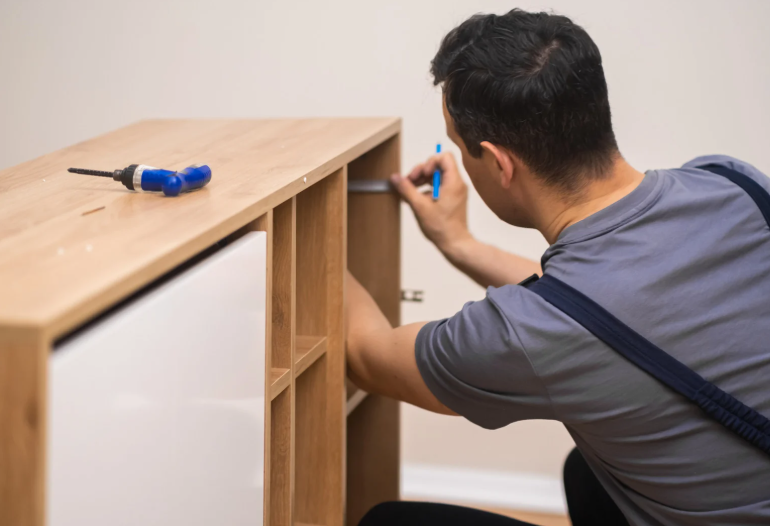Rotator cuff related pain is one of those frustrating issues that can creep into daily life, making simple tasks like hanging out the washing or reaching for a high shelf feel like a struggle.
The rotator cuff is a group of four muscles and their tendons that stabilise the shoulder joint. The shoulder joint is very mobile with the ability to move in many directions, therefore these muscles must work all together to keep the ball in the socket throughout movement. These muscles work hard to keep your shoulder moving smoothly, but they’re also prone to injury. Whether it’s from repetitive overhead movements, a sudden fall, or simply wear and tear over time, rotator cuff injuries are incredibly common.
In this blog, we’ll break down the most common rotator cuff injuries, their symptoms, how they’re treated, and what you can do to keep your shoulders strong and pain-free. Plus, we’ll share a recent success story of a patient who turned things around with physiotherapy.

Common Rotator Cuff Injuries
1. Rotator Cuff Tendinopathy
This is a fancy term for irritation or degeneration of the rotator cuff tendons. It’s common in people who perform repetitive shoulder movements, such as tradies, painters, swimmers, and tennis players. Over time, the tendons become overloaded, leading to pain, weakness, and difficulty lifting the arm.
Symptoms:
- Pain when lifting the arm or reaching overhead
- Shoulder stiffness, especially in the morning
- Weakness in the affected arm
- Often with repeated movements, the symptoms can warm up and improve
Treatment:
- Rest from aggravating activities (but not total immobilisation!)
- Strengthening exercises prescribed by a physiotherapist
- Manual therapy to improve shoulder mobility
- Deep tissue massage or dry needling to reset the tone of muscle and improve biomechanics
- Ice or heat therapy to manage pain

2. Rotator Cuff Tears
A rotator cuff tear can be partial (where only part of the tendon is damaged) or full-thickness (where the tendon is completely torn). These injuries can happen suddenly from trauma, such as a fall or lifting something too heavy, or they can develop gradually from long-term wear and tear.
Symptoms:
- Sharp or deep pain in the shoulder, especially at night
- Significant weakness when lifting or rotating the arm
- With a full thickness tear, it might not be possible to lift the arm
- Clicking or cracking noises with movement
Treatment:
- Physiotherapy exercises to restore strength and function
- Hands-on treatment to reduce pain and stiffness
- Shockwave therapy can be used to bring blood to the area for healing
- Platelet rich plasma (PRP) injections can help with accelerating healing of a tear
- Surgery in severe cases, but many people recover well with rehab alone
3. Shoulder Impingement Syndrome
Shoulder impingement occurs when the rotator cuff tendons get pinched between the bones of the shoulder, leading to pain and inflammation. This is common in people who do a lot of overhead movements, such as swimmers, weightlifters, and tradespeople.
Symptoms:
- Pain when reaching overhead or behind the back
- A catching sensation in the shoulder
- Difficulty sleeping on the affected side
Treatment:
- Postural corrections and movement retraining
- Strengthening the rotator cuff and scapular muscles
- Soft tissue release and stretching to reduce tension
- Activity modifications to avoid irritating movements
- Cortisone injections for persistent inflammation (if necessary)
4. Calcific Tendinitis
This condition occurs when calcium deposits build up in the rotator cuff tendons, leading to severe pain and restricted movement. The cause isn’t fully understood, but it’s more common in people aged 30–50 and can come on quite suddenly.
Symptoms:
- Intense, often sharp shoulder pain
- Difficulty moving the arm due to stiffness
- Pain that worsens at night
Treatment:
- Physiotherapy to maintain movement and strength
- Shockwave therapy to break down the calcium deposits
- Anti-inflammatory medications
- In rare cases, needle aspiration or surgery
Physiotherapy: Your First Line of Defence
Many people worry that a rotator cuff injury means surgery, but the good news is that most cases respond well to physiotherapy. A structured rehab program can help reduce pain, restore movement, and prevent future injuries.
Physiotherapy treatment typically includes:
- Manual therapy to reduce tone in muscles and improve joint mobility
- Exercise-based rehab to strengthen the rotator cuff and surrounding muscles
- Postural correction to prevent excessive strain on the shoulder
- Activity modification to reduce aggravation while still keeping active
- Shockwave therapy to promote healing and break down calcifications in chronic cases
- Dry needling to release tight muscles and improve blood flow
- Joint mobilisations to restore normal movement patterns
- Biomechanical assessments to identify and correct movement dysfunctions that may be contributing to shoulder pain

Case Study: A Journey Back to Shoulder Health
James, a 52-year-old carpenter, came to our clinic with ongoing right shoulder pain that had been getting worse over the past six months. He struggled with lifting tools overhead and even had trouble putting on his shirt in the mornings. An ultrasound confirmed he had a partial rotator cuff tear.
Initially, James was worried he’d need surgery, but after a chat with our physiotherapist, he committed to a structured rehab program. Over 10 weeks, we worked on:
- Progressive strengthening exercises to rebuild his shoulder stability
- Manual therapy to release tight surrounding muscles
- Shockwave therapy to accelerate tendon healing
- Dry needling to reduce muscle tension
- Joint mobilisations to restore pain-free range of motion
- Education on movement patterns to avoid further aggravation
By the end of his rehab, James was pain-free, back to full function, and lifting tools again with no issues. Best of all, he avoided surgery and is now maintaining his shoulder health with a home exercise program.

Preventing Rotator Cuff Injuries
Here are some simple ways to protect your shoulders and keep them strong:
- Strength training: Keep your rotator cuff and shoulder muscles strong with targeted exercises.
- Posture awareness: Avoid slouching, especially if you work at a desk.
- Warm-up before activity: Stretch and activate your shoulders before workouts or heavy lifting.
- Listen to your body: Don’t push through pain—rest and modify activities as needed.
Final Thoughts
Rotator cuff injuries can be frustrating, but with the right treatment, most people make a full recovery without needing surgery. Physiotherapy is a game-changer when it comes to reducing pain, restoring function, and preventing future issues.
If you’re struggling with shoulder pain, don’t wait—book an appointment with X Physio and get on the path to recovery!
References and Further Reading:
- Physio Works – Rotator Cuff Injuries: https://www.physioworks.com.au
- Australian Physiotherapy Association – Shoulder Pain: https://australian.physio
- Sports Medicine Australia – Rotator Cuff Rehabilitation: https://sma.org.au
If you’ve ever woken up with a very stiff and deep ache in your shoulder, then you might have experienced a condition we physiotherapists know as adhesive capsulitis — or more commonly, frozen shoulder. It’s one of those sneaky conditions that can slowly creep up on you, making even the simplest tasks, like brushing your hair or reaching for a coffee cup, a real challenge. Let’s get into what frozen shoulder is, who it affects, and how physiotherapy can help you unfreeze that shoulder and get back to living your life.
What is Adhesive Capsulitis?
Adhesive capsulitis is a condition characterised by stiffness and pain in the shoulder joint. It happens when the connective tissue surrounding your shoulder joint (the capsule) becomes thickened and tight. This leads to a significant reduction in movement and, as the name suggests, makes your shoulder feel “frozen”.
The exact cause isn’t always clear, but it’s believed to involve inflammation and scar tissue development within the shoulder capsule. This makes the joint less flexible and limits its range of motion. Adhesive capsulitis typically progresses through three stages:
Freezing Stage: Pain gradually increases, and shoulder movement becomes restricted. This stage can last anywhere from six weeks to nine months.
Frozen Stage: The pain might subside slightly, but stiffness becomes more pronounced, making everyday activities harder. This stage can last four to six months.
Thawing Stage: Movement begins to improve as the shoulder slowly regains its range. This stage can take six months to two years.
Learn more about adhesive capsulitis stages.
Who is Most at Risk?
Frozen shoulder doesn’t discriminate, but there are some groups of people who are more prone to it.

- Age: It’s most common in people aged 40 to 60 years old, with a slight preference for women.
- Diabetes: People with diabetes are two to four times more likely to develop adhesive capsulitis. The exact link isn’t fully understood, but it’s thought to involve changes in collagen or blood sugar levels affecting joint tissues.
- Thyroid Conditions: Those with thyroid disorders, like hypothyroidism or hyperthyroidism, are also at higher risk.
- Immobilisation: If your shoulder has been immobilised for a while due to injury or surgery, you’re more likely to develop frozen shoulder.
- Other Conditions: Cardiovascular disease and Parkinson’s disease can also increase the likelihood of experiencing adhesive capsulitis.
Read about risk factors for frozen shoulder.
Common Symptoms and Presentation
Frozen shoulder often presents with:
- Pain: It’s usually a deep, aching pain in the outer shoulder and upper arm, which can be worse at night or with certain movements.
- Stiffness: The shoulder feels tight and hard to move, making daily tasks like dressing, cooking, or even sleeping difficult.
- Reduced Range of Motion: Simple actions, like reaching behind your back or overhead, become nearly impossible
Check out mobility exercises for frozen shoulder.
Many people describe the condition as incredibly frustrating because it feels like progress is painstakingly slow, even with treatment.
The Role of Physiotherapy in Treating Frozen Shoulder
Physiotherapy is a cornerstone of treatment for adhesive capsulitis. While the condition can resolve on its own over time, physiotherapy can significantly reduce pain, improve range of motion, and speed up recovery. Here’s how:
1. Pain Management
Your physio might use modalities like heat packs, ice therapy, or gentle massage to help manage pain. Dry needling or TENS (transcutaneous electrical nerve stimulation) may also be employed. Often there can be associated pain in surrounding joints and muscles due to the change in movement patterns. Patients will often present with pain in the upper trapezius region which responds well to physiotherapy treatment. Furthermore, the physio is likely to discuss the pro’s and con’s of other treatments such as a corticosteroid injection or Hydrodilatation at this point.
2. Improving Mobility
Specific stretches and exercises are designed to gently improve the range of motion without aggravating the joint. These might include:
- Pendulum Swings: Small, circular movements to loosen up the shoulder.
- Cross-Body Stretch: Stretching the affected arm across the chest to improve flexibility.
- Wall Crawls: Using your fingers to “climb” a wall, helping to extend your arm overhead.
3. Strengthening the Shoulder
As mobility improves, strengthening exercises are introduced to support the shoulder joint and prevent future issues. This might involve resistance bands, light weights and body weight exercises.
4. Education and Guidance
Your physio will teach you about posture, activity modifications, and how to avoid overloading your shoulder. They’ll also keep you motivated throughout the often-lengthy recovery process.
5. Hands-On Techniques
Manual therapy, such as joint mobilisation or soft tissue release, can help loosen tight structures and improve mobility.

What Does a Physiotherapy Program Look Like?
Treatment is tailored to each person’s stage of adhesive capsulitis. Here’s a general outline:
- Freezing Stage: Focus on managing pain and maintaining as much movement as possible without aggravating the shoulder. Treatment is focussed upon surrounding joints and muscles.
- Frozen Stage: Gentle stretches and exercises to improve mobility while minimising pain.
- Thawing Stage: More aggressive stretches and strengthening exercises to fully restore function.
Your physiotherapist will monitor your progress and adjust your program as needed. Consistency is key — recovery might feel slow, but steady work pays off.
A Real-Life Example: Meet Sarah
Sarah is a 52-year-old teacher who loves gardening and yoga. She first noticed pain in her right shoulder a few months ago, but she shrugged it off, thinking it was just a strain. Over time, her shoulder became stiffer, and soon she struggled to put on her jumper or reach for items on the top shelf. The pain disrupted her sleep, leaving her exhausted and frustrated.
Sarah visited her GP, who diagnosed her with adhesive capsulitis and referred her to us at XPhysio. At her first appointment, we explained the condition and reassured her that recovery was possible with patience and commitment.
The Treatment Plan
- Pain Management: Sarah started with heat packs and gentle massage to ease her discomfort. We also taught her relaxation techniques to manage night-time pain. A corticosteroid injection made a significant improvement in her pain levels allowing for more sleep.
- Gentle Stretches: In the freezing stage, Sarah focused on pendulum swings alongside trigger point self-releases which was taught so she could do this in her own time. By gaining more range in her upper back, she found a huge improvement in her shoulder mobility.
- Progressive Exercises: As she moved into the frozen stage, her exercises were upgraded to wall crawls and resistance band exercises to gradually improve her range of motion and strength.
- Home Program: at each phase, Sarah was provided a customised home exercise plan and encouraged her to stay consistent.
The Outcome
After six months of physiotherapy, Sarah’s range of motion improved significantly, and her pain was under control. By the nine-month mark, she was back to her yoga classes and tending to her beloved garden. We continued to monitor her progress, ensuring she had the tools to prevent future issues.
Final Thoughts
Adhesive capsulitis might be a slow and frustrating condition, but with the right guidance and perseverance, it doesn’t have to be a permanent roadblock. Physiotherapy plays a vital role in not only easing the pain but also helping you regain your strength, mobility, and confidence.
If you’re struggling with a frozen shoulder, reach out to XPhysio today. Remember, you don’t have to face this challenge alone — help is just a phone call away.
